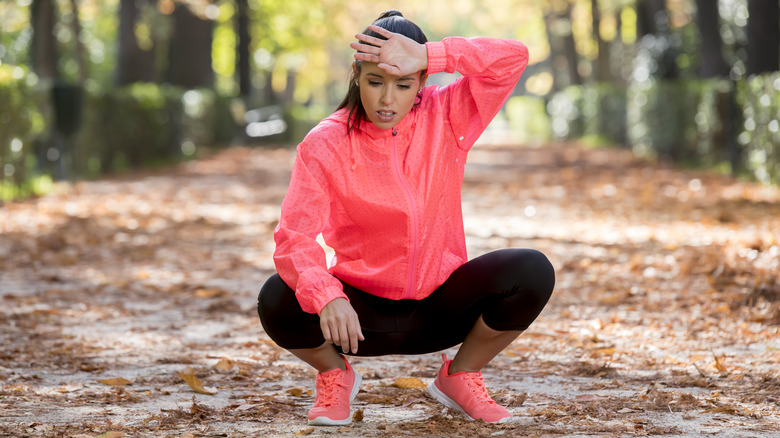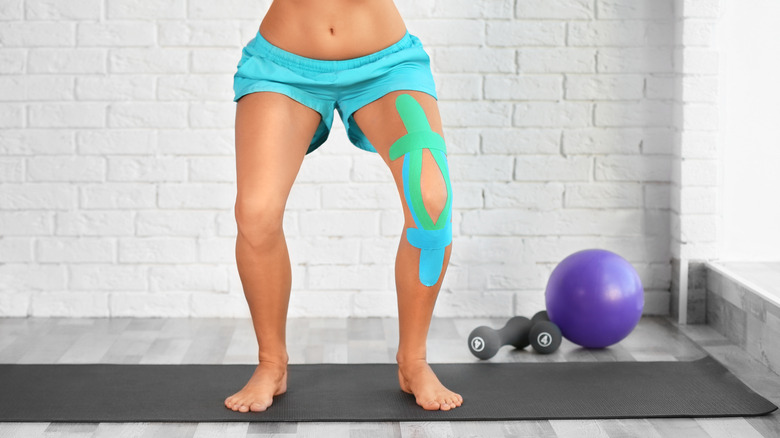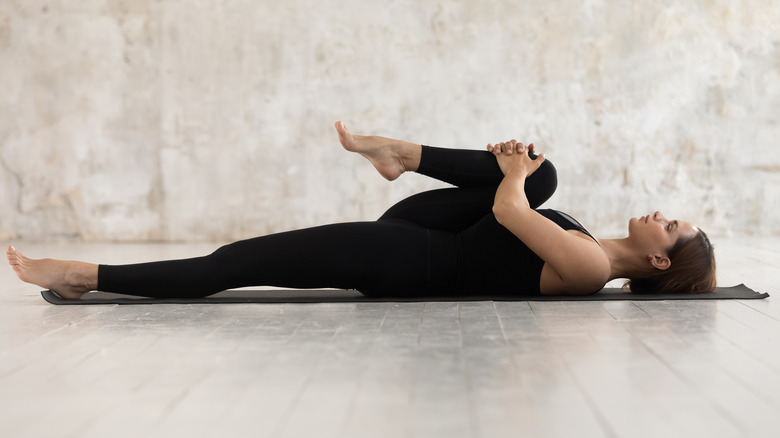What It Means When You Can't Do A Deep Squat
Maybe you noticed while you were working on lifting your booty, or perhaps it was when you bent down to pick up the toys your dog-child left on the floor. However it happened, you finally had the realization... you can't do a deep squat the way you used to!
Our bodies are designed to crouch and get low, but it can become a bit harder as we get older. There are a few explanations for this change, but the most common reason we struggle to squat is pretty simple, actually. We sit too much and use those muscles too little.
Since we were school kids, we've been training our muscles to sit for 8 hours a day or more. While we have likely always spent a lot of time sitting, it's not the most natural position for our bodies. Physical therapist Doug Kechijian explained to Men's Health that when sitting in a chair, our hip and ankle muscles tighten and the core muscles totally relax. When your brain senses tightness in a muscle, it sends pain there as a signal that you need to move it.
Why am I struggling to squat?
Sitting too much is the biggest culprit when it comes to inhibiting your range of motion, and there are a few different muscle groups that could be negatively affected by it. If you find that getting low is the issue, certified fitness trainer Emily McLaughlin told Livestrong that tight hips might be the problem. "Tight hips can hinder the depth of your squats and also lead to poor form," McLaughlin told the source.
Maybe your hips are loosey-goosey, but your knees don't feel so great when you bend down. While there are a few reasons you might have knee pain, you might consider that a very common muscular imbalance is to blame. "If your knees cave inwards when you squat, it's likely a symptom of a sedentary lifestyle," McLaughlin told the source. When your outer thighs aren't quite as strong as your inner thighs, it could cause your knees to pull inward. This puts too much stress on the knees and can lead to discomfort or injury.
How can I fix the problem?
We know you just want to get down, so if you think tight hips might be the cause of your struggle, add some targeted hip stretches to your morning routine. Figure four, bridge, and low crescent lunges are great for stretching your hip flexors, allowing you access to a bigger range of motion.
For painful knees, start by strengthening the surrounding muscles. Fire hydrants and clamshells are effective in building up your outer thigh and butt muscles so that your knees don't take so much impact.
If you find that loss of balance is the issue, improper form is probably to blame. McLaughlin told Livestrong the best way to squat is to plant your feet hip-length apart, placing your weight in your heels. Keep your chest lifted, your shoulders back, and your spine straight. Finally, make sure to move with intention rather than speed.



